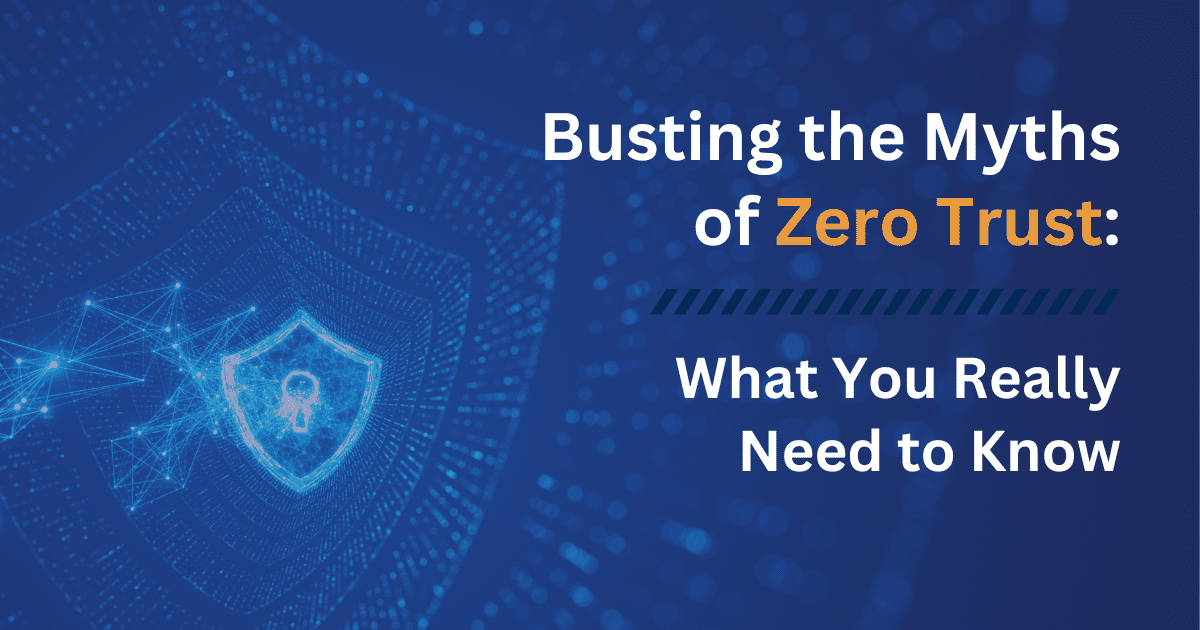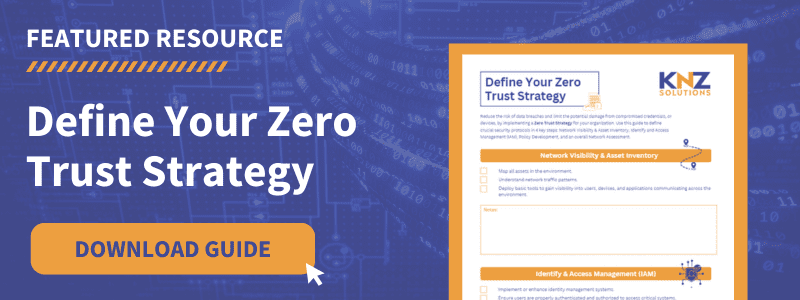As organizations face increasing cybersecurity threats, the Zero Trust Security Model has gained recognition as a vital approach for strengthening security measures. Despite its growing popularity, numerous myths and misconceptions surround Zero Trust, which can hinder effective understanding and implementation. At KNZ, a global IT consulting company, we are dedicated to helping businesses navigate complex IT challenges. In this article, we’ll clarify what zero trust truly entails by debunking common myths and providing valuable insights for organizations of all sizes to adopt this strategic framework confidently.
Zero Trust Myths
Myth 1: Zero Trust is a Product
Fact: Zero Trust is not a single product you can buy off the shelf; rather, it represents a comprehensive approach to security that focuses on continuous verification and strict access controls. It involves establishing a framework that incorporates various policies, procedures, and technologies to secure data and resources, ensuring that no one is inherently trusted.
Myth 2: Zero Trust is a Tool
Fact: Implementing a Zero Trust model requires multiple tools and technologies that work in tandem, such as identity and access management (IAM), multi-factor authentication (MFA), and network segmentation solutions. Relying on one tool alone will not achieve the holistic security that zero trust promises; instead, it requires an ecosystem of solutions tailored to the organization’s needs.
Myth 3: Zero Trust is Expensive
Fact: Zero Trust can be rolled out incrementally, allowing businesses to prioritize critical areas and spread costs over time. By developing a phased roadmap, companies can allocate resources efficiently and adapt their budget according to their evolving security needs.
Myth 4: Zero Trust is Very Complex
Fact: Zero trust is a continuous process that adapts to new threats and vulnerabilities. Organizations can start simple, gradually enhancing their security measures and policies as they learn and grow, thus making it manageable.
Myth 5: Zero Trust is Disruptive
Fact: The transition to a zero trust model doesn’t have to cause significant upheaval within an organization. By adopting a phased approach, businesses can gradually introduce new policies and technologies, minimizing impact on daily operations. This way, teams can adjust without major disruptions.

Myth 6: Zero Trust is Only for Large Enterprises
Fact: Although zero trust was first embraced by large enterprises, its principles are applicable to organizations of all sizes. Small and medium-sized businesses can leverage zero trust to enhance their security posture without needing extensive resources, making it a viable strategy for any organization.
Myth 7: Zero Trust is a Single Product or Solution
Fact: Zero trust is a framework that integrates various technologies and policies, adapting to the specific requirements and risks faced by an organization. This customization is essential because different businesses have different environments, data sensitivities, and regulatory obligations, necessitating a tailored approach.
Myth 8: Zero Trust Eliminates the Need for a Perimeter
Fact: While zero trust emphasizes verification at every access point, it does not negate the importance of perimeter security. Instead, it complements them, acknowledging threats can exist both inside and outside the network.
Myth 9: Zero Trust is Too Complex to Implement
Fact: While implementing zero trust can be complex, it is achievable with a phased approach. Organizations can start by identifying their most critical assets and progressively apply zero trust principles, allowing for iterative improvement and adjustment as they go along.
Myth 10: Zero Trust Means Zero Breaches
Fact: While zero trust significantly enhances security, it does not guarantee zero breaches. Its goal is to minimize the impact of breaches by limiting access and containing threats.
Conclusion
Embracing Zero Trust isn’t just a technological upgrade; it’s a shift in culture. By adopting the mantra “Never Trust, Always Verify”, organizations can cultivate a proactive security mindset that evolves alongside emerging threats. At KNZ, we’re here to help you on this journey, ensuring that your security framework not only meets today’s challenges but also prepares you for tomorrow’s uncertainties.
Ready to strengthen your security posture?
Take the first step towards implementing a Zero Trust framework tailored to your organization’s unique needs. Contact KNZ today for a consultation and discover how we can help you navigate the complexities of cybersecurity with confidence.




